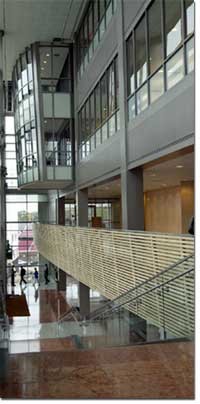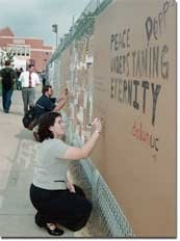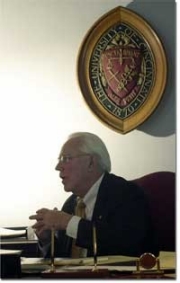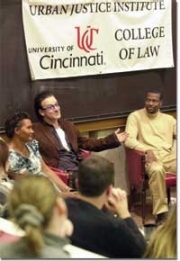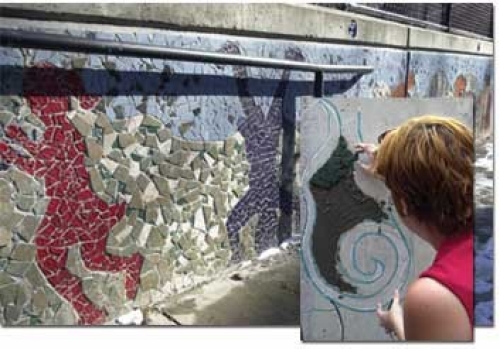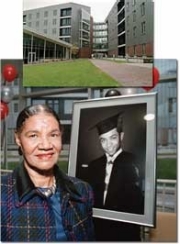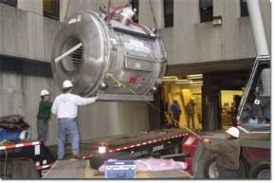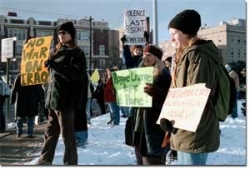Only one stop for students -- really
The "UC Shuffle" officially halted with the December opening of the $32 million University Pavilion. To keep students from shuffling back and forth across campus to conduct business in six different buildings, more than a dozen student-service offices moved into the new six-story building on a site formerly occupied by Beecher Hall.
"What we have created is leading edge in all of the country," says Mitchel Livingston, vice president of Student Affairs and Services. "We want our students," adds Stan Henderson, associate vice president for Enrollment Management, "to be challenged in the classroom by their academics rather than challenged by the harassment of bureaucracy."
In one location, students can now register, check grades, drop and add classes, pay tuition, apply for financial aid, obtain student health insurance, discuss disability services, obtain academic counseling, seek career guidance and more. Better yet, most services can be obtained by talking to a single cross-trained professional in a mini-living-room "pod" at One Stop Student Services, which extends hours to 7 p.m. on Mondays through Thursdays.
Operating as the university's front door, the Pavilion also contains the new University Visitors Center and executive offices for the president, the Board of Trustees and most of the vice presidents. A bridge connects the building to the College-Conservatory of Music and its garage.
The building was constructed without student fees or private money by using state capital projects dollars, which remain separate from academic funding.
Links:
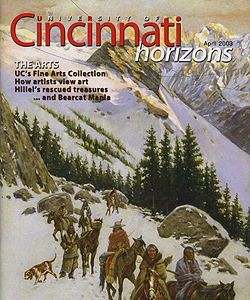
 Past Issues
Past Issues